Huw Durban
Dione Ball
Barry Burn
A short evening trip into North West Inlet (NWI) was decided upon although I wasn’t sure if I would be home from work in time for it. There was to be the full compliment but various childcare issues meant that the ones lucky enough to have children old enough to look after themselves were the only ones able to make it.
Meeting at the layby by UB40 and jumping out of the car made me pause. There was something odd and strange, something was different, then it struck me, tarmac! The layby had been given a very nice new surface that replaced the horrible mud and discarded rubbish.
We were quickly changed and off up the path to the OCAF entrance. Dione, our newest member hadn’t been into OCAF before and was keen to see what we had been waxing so lyrical about.
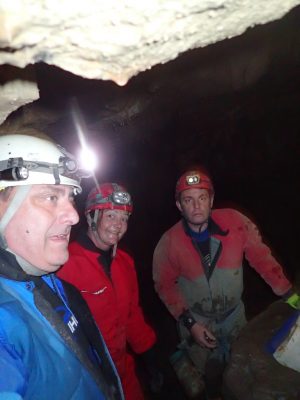
At the log book. Huw and I seem to look worried, whilst Dione shows she knows how this selfie thing works.
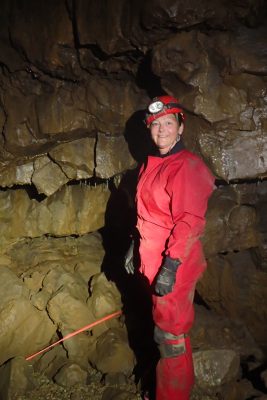
The North West Inlet trip is (or was) an often overlooked trip that takes you through a very wet approach passage just before the pitches up to the Second Choke. This passage, although never taking you out of your depth (unless very short) will get you very wet as you wade neck deep in places. It soon, however, rises up and leads to a short muddy section and then gets bigger and higher as you follow the streamway. Formations abound, with one of the best being “The Dragon” but also plenty of flowstone and stalctites are to be seen.
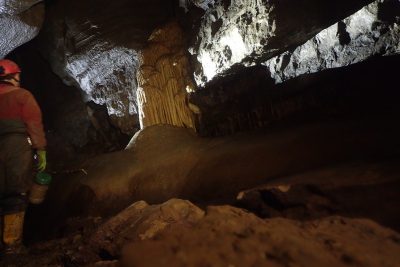
Flowstone Formations
There is a bit where you have to drop through boulders to continue and here it was sad to see that people had tried to go past the tapes and the obvious marks in the mud the other side of the route through the boulder bore witness to this. It does make me wonder how stupid people can be to not be able to follow an obvious taped path.
Continuing on brings you to the end of the passage and the dig that John Parker and Jeff Hill pushed for a long time, installing a railway with miniature wagons for the removal of spoil. The dig itself is rather unstable now with some collapses within but I often wonder what the indefatigable OCAF diggers would have found if they’d continued.
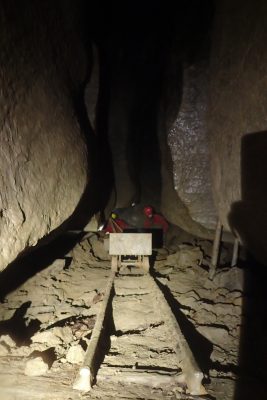
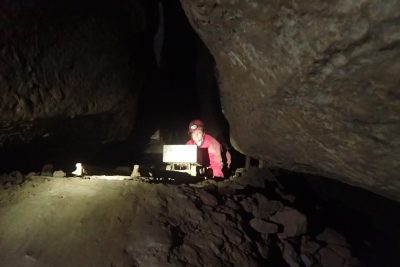
A look at the railway and the formations at the end of the passage and we were soon on our way back out and at the cars getting changed.
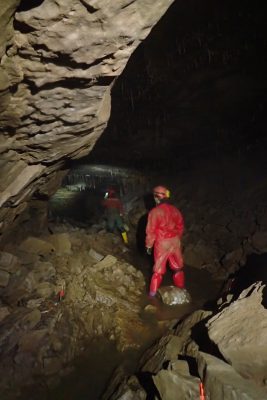
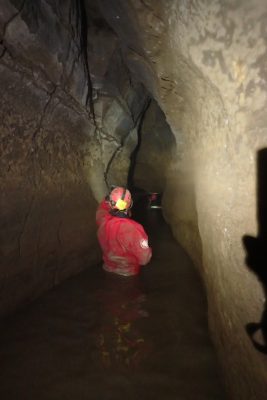
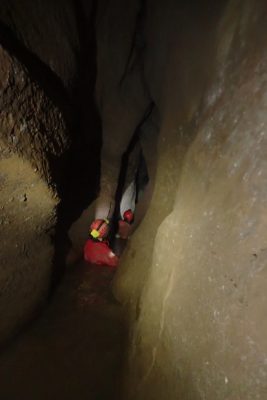
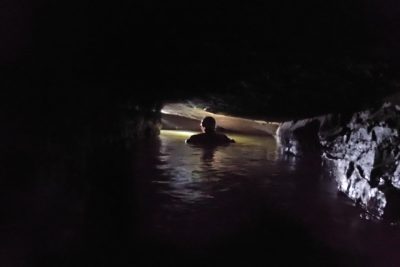
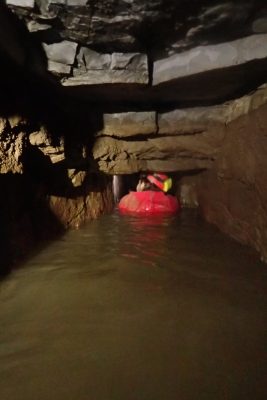
Judging by Dione’s mad grin that seemed to now be a permanent fixture, I think she enjoyed herself and is now ready for a foray beyond the Second Choke and having already been into Nant Rhin, I have no doubt she will find it a piece of cake.

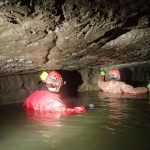
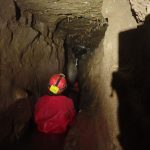
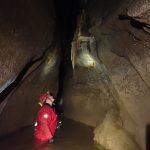
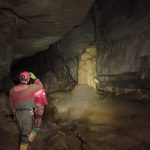
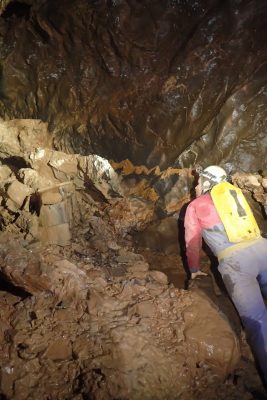
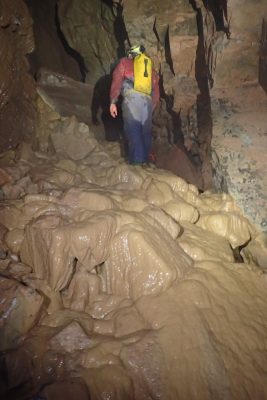
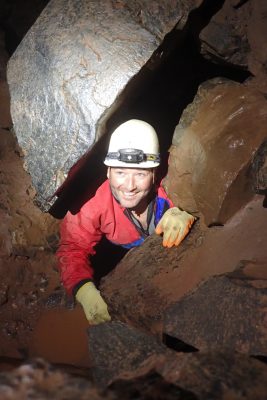
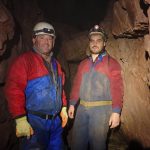
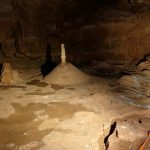
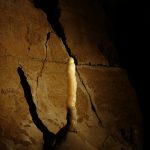
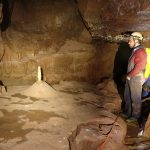
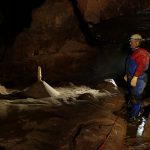
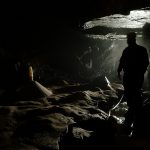
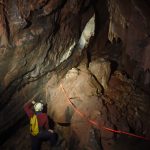
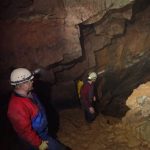
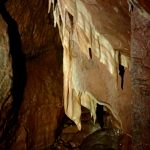
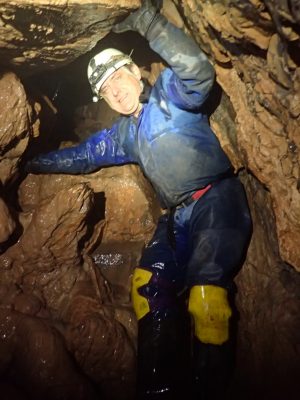
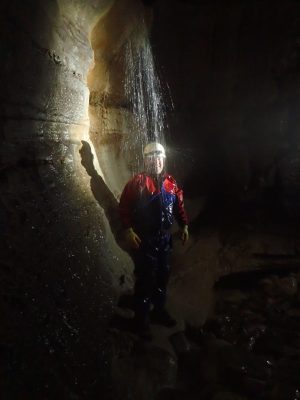
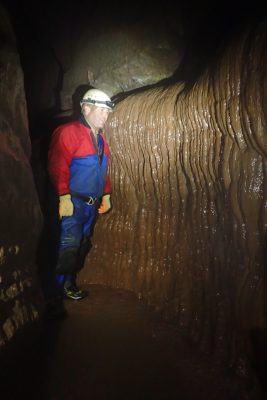
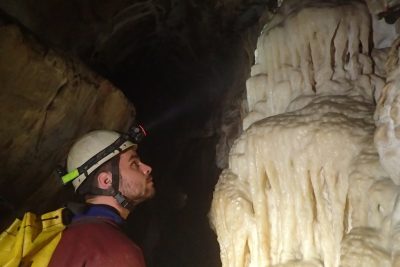
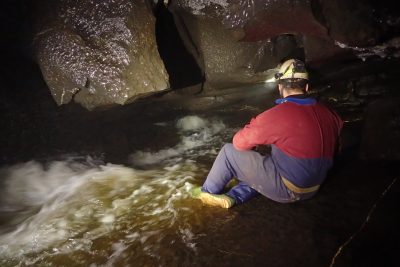
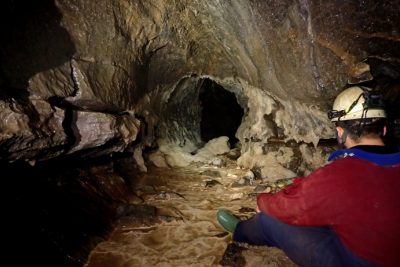
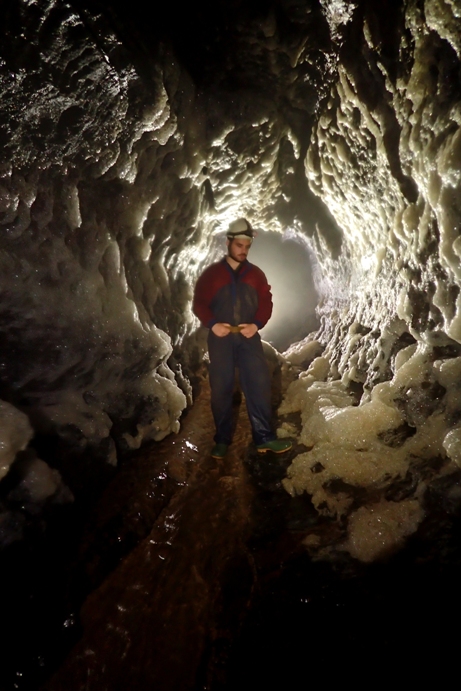
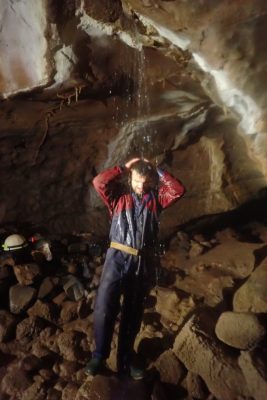
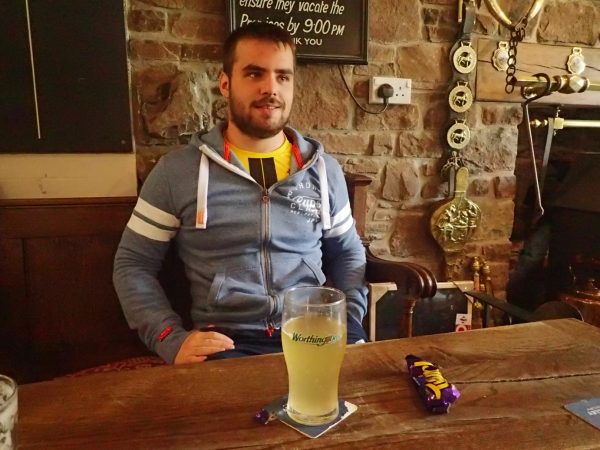
You must be logged in to post a comment.